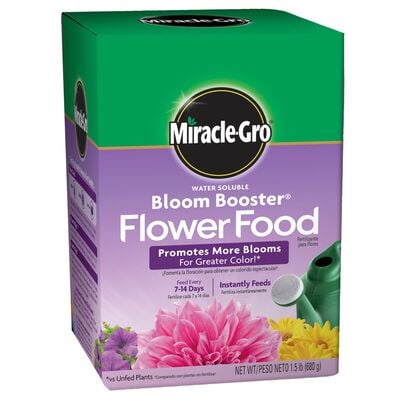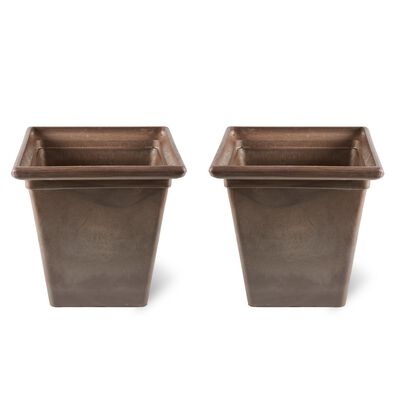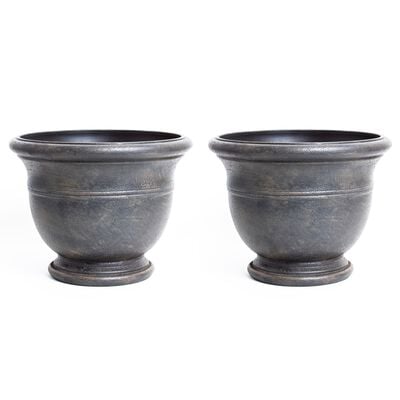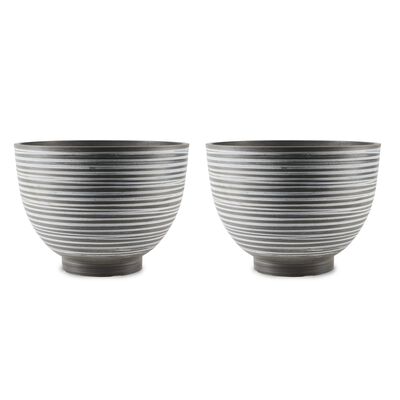
Bring Pollinators to Your Yard
Being nice to bees, butterflies, and birds is all the buzz.
Imagine walking outside to find bees buzzing, butterflies fluttering, and hummingbirds performing acrobatics around your flowers. As you walk around deadheading, watering, or just enjoying a sunny day, you watch caterpillars munch on leaves to a peaceful songbird soundtrack. Sounds nice, right? Good news, then: This dream can happen! Plant the right plants and you can easily bring pollinators to your yard—or anywhere else you can fit a few flowers.
Pollinators, and Why We Need Them
There’s a lot of buzz around pollinators, and rightfully so: They perform the absolutely essential task of carrying pollen from the male to the female part of a flower (or to another flower). Without pollinators we wouldn’t be able to grow productive gardens.
Most of our best pollinators are native bees, butterflies, and birds. The problem is, because they’ve evolved alongside our native plants, they don’t recognize nonnative plants as food. So your exotic trees, shrubs, and perennials—and your lawn—can create food desserts for those environmental workhorses. That’s where you step in, since you can control what you grow!

Make a Pollinator Plan
Small steps can have a big impact. Short on space? No problem—pop a few pollinator-friendly plants into a container. Or, if you plant flower beds or a bountiful garden each year, simply swap in some enticing plants. Better yet, devote your entire backyard to attracting these beneficial beings. Here are some ways to get growing, from all-in to just a single pot.
Go All In
If you're feeling ambitious, go ahead and devote your entire garden to pollinator plants—the bees will thank you. Start by removing invasive and exotic plants, then weed the area well, enrich the soil with compost (your own or store-bought), and add your plants. Be sure to include plants with different bloom times to give pollinators a steady food supply throughout the season.
Make a Swap
Swap small sections of your lawn or flower beds for plants that you still find visually compelling, but appeal to pollinators as well. Then, as you bring new plants into your garden, make it a point to shop for flowers that attract bees, butterflies, and birds. If you grow vegetables, mix pollinator-friendly plants between them. You'll lure insects that can improve your harvests while keeping certain pests at bay.
Pot Some Up
If your outdoor area is limited to a window box, you can still get in on the action—just combine three to five native plants in one container. Take that approach even if you have space to pot up more plants. Spread them around your porch, patio, or fire escape, and watch as the beneficial insects get busy.
Pollinator Plant Preferences
Just as humans have food preferences (anchovy pizza, anyone?), each type of pollinator is attracted to specific flowers. That means you can bring on the butterflies by growing more milkweed, or give hummingbirds a steady snack by planting columbines. To maximize the amount of flowers on offer, fertilize your plants once a week with a plant food designed to boost blooming, like Miracle-Gro Performance Organics Blooms Plant Nutrition.
Here are some plants to put on the menu for your favorite pollinators.
Bees
Bees collect nectar and pollen from many plants, but their favorites include clover, black-eyed Susans, bee balm, coneflowers, milkweed, anise hyssop, and cranesbill.
Butterflies
When it comes to feeding butterflies, you're feeding for two stages. They start out caterpillars, which are even pickier than human toddlers; many live exclusively off the leaves of one specific plant. Adult butterflies aren’t as persnickety, but they do need nectar to survive.
Zebra swallowtail caterpillars will only eat leaves from the pawpaw tree, while Gulf fritillary caterpillars need passionflower vines to survive. You won’t see any monarch butterflies without milkweed plants to feed their larvae. Other distinct caterpillar preferences include slender false foxglove to attract buckeye butterflies, Dutchman’s pipe for pipevine swallowtails, cornflowers for painted lady butterflies, and spicebush for spicebush swallowtails.
In general, adult butterflies snack on perennials like yarrow, beebalm, black-eyed Susans, goldenrod, coreopsis, purple coneflower, Joe Pye weed, swamp milkweed, Indian paintbrush, sunflowers, cardinal flowers, meadowsweet, New England aster, and violets. Shrubs like sweet pepperbush, New Jersey tea, and buttonbush, as well as trees like redbud and wild plum, are favorites, too.

Hummingbirds
Hummingbirds are tiny little birds with huge appetites. They're constantly on the move, beating their wings up to 80 times per second! So, they need calorie-dense, high-energy nectar from specific plants. They're naturally drawn to brightly colored, tubular flowers like columbines, larkspur, lupines, petunias, and salvia, but love bee balm and zinnias, too.
Birds, bees, and butterflies are essential to the success of our gardens—and the environment—plus they're fun to watch! The good news is that just one plant that nourishes one caterpillar can make a difference, so get planting and see who comes to dinner.



